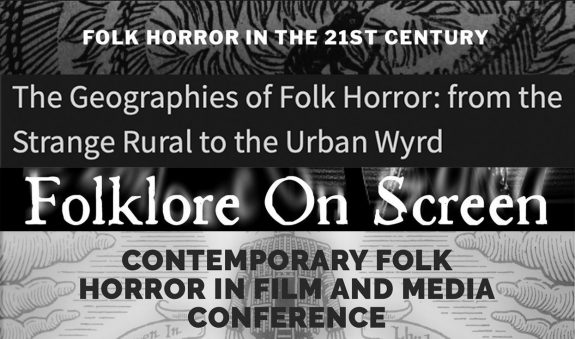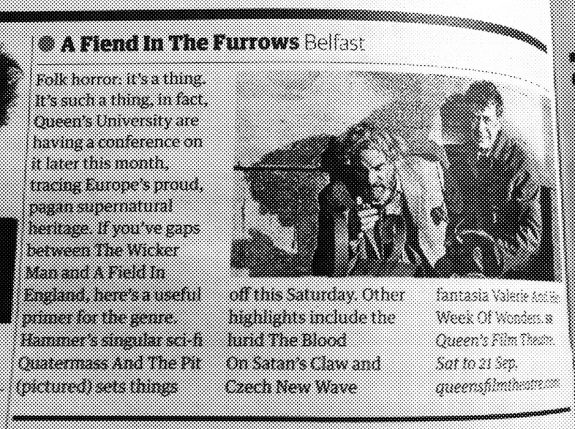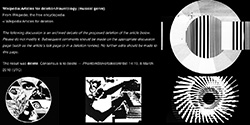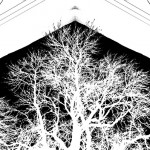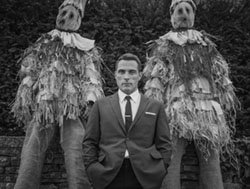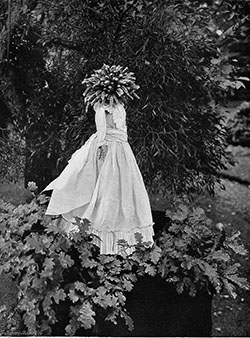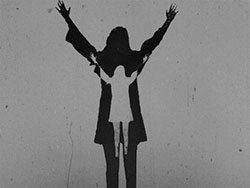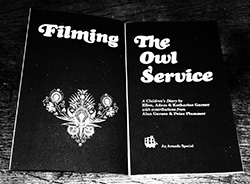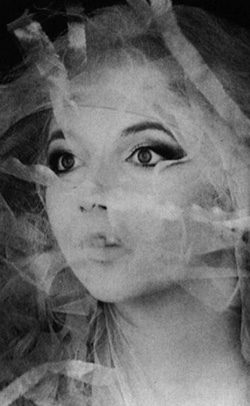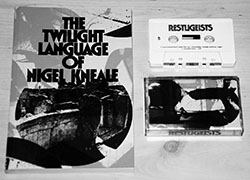Late summer in the UK this year there’s something of a gathering of academic conferences that focus on folk horror, the spectral undercurrents of folklore and the landscape and so on.
They could be considered this summer’s academic research flipside of the A Midsummer Night’s Happening, Weirdshire and The Delaware Road: Ritual & Resistance events that I wrote about earlier in the year.
Anyways, I thought it would be good to gather them together, and also to place them in a lineage of earlier events which explored similar themes.
The 2019 conferences are:
Folklore on Screen, presented by the Centre for Contemporary Legend at Sheffield Hallam University on 13-14th September 2019, which is described as “A 2-day international conference, with a hauntological music event”, and is said to explore “the meaning, import and relevance of folklore in the media and its representation, communication and perpetuation”.
The events at the conference are split into different categories: Monster Mash, Ghosts in the Machine, I Want to Believe, The Haunted Generation, The Devil Rides Out, Island of Lost Souls and At the Mountains of Madness, with some of the papers being presented having titles which include Beasts, Monoliths & Witchcraft – the Unsung Nigel Kneale and The Wicker Man and the misuses of Folklore.
In a connection to less academically orientated otherly folkloric, hauntological etc work, the event also features a panel called The Haunted Generation, the members of which are David Southwell of Hookland, Andy Paciorek of Folk Horror Revival/Wyrd Harvest Press and Bob Fischer, who writes The Haunted Generation column for Fortean Times, which the panel is named after.
In an interconnected manner to that panel, one of the organisers of the conference, Diane A. Rogers, also contributed an article and was interviewed for the Folk Horror Revival: Urban Wyrd – 2. Spirits of Place book (other members of the team behind the Centre for Contemporary Legend include David Clarke, Andrew Robinson and newer member Sophie Parkes-Nield).
Also, connected to the event, Heretics Folk Club are hosting an accompanying music night featuring Sharron Kraus, Cath & Phil Tyler and Hawthonn (coincidentally, back in the first year of A Year In The Country in 2014, I wrote about a Heretics Folk Club event where Sharron Kraus performed – the photograph/collage in the middle above is from that event.)
Coming soon/about now, there is a conference at Falmouth University on 5-6th September 2019, which is titled Folk Horror in the 21st Century.
Reproduced below is some of the accompanying text from the conference:
“Since at least 2010, critics and bloggers have been working to define folk horror, understand its appeal, and establish its key texts, including what has become the central triumvirate of the folk horror canon of the 1960s and 1970s—Witchfinder General (Michael Reeves, 1968), Blood on Satan’s Claw (Piers Haggard, 1971), and The Wicker Man (Robin Hardy, 1973)… The 1960s and 1970s also saw a rise in folk horror texts in British literature and TV series: Robin Redbreast (1970), BBC’s A Ghost Story for Christmas (1971-78), Penda’s Fen (1974), Children of the Stones (1977), and Alan Garner’s novels The Owl Service (1967) and Red Shift (1973)… Critics have also begun to uncover a rich pre-history for the folk horror of the 1960s and 70s, looking back to the 19th and early 20th century fiction of Nathaniel Hawthorne, Arthur Machen, and M. R. James. But the history of folk horror can be traced still further back, to Beowulf, Sir Gawain and the Green Knight, Shakespeare, and the mystical poetry and witchcraft plays of the seventeenth century… At the same time, directors in the 21st century have been re-inventing the genre with such new incarnations with films such as The Blair Witch Project (1999), Eden Lake (2008), Wake Wood (2009), Kill List (2011), A Field in England (2013), The Witch (2015), The Hallow (2015), Without Name (2016), Apostle (2018), and Hereditary (2018)… This conference will aim to explore and represent the ‘state of the art’ of folk horror scholarship about all periods and regions…”
This conference is organised by Ruth Heholt, Dawn Keetley, Joanne Parsons and David Devanny, and its website features a rather fascinating Bibliography, some of which I’ve already read and written about such as Robert Macfarlane’s article “The Eeriness of the English Countryside”, and I expect the rest could well keep me busy for a month or few…
As with Folklore on Screen, the conference is also accompanied by a musical event; this features We Are Muffy, a duo that comprises of Nick Duffy and Angeline Morrison, who are said to spin narratives “of remembered and imagined pasts”.
(Angeline Morrison also collaborated on an album called In the Sunshine We Rode the Horses, which was released under the name Rowan : Morrison. For that she worked with Stephen Stannard of The Rowan Amber Mill – it’s something of a fine album, that has its own character but also feels like listening to some lost acid/psych folk album from the late 1960s or some point in the 1970s. I’ve written about it elsewhere at A Year In The Country and it also features in the upcoming A Year In The Country: Straying from the Pathways book.)
While just gone, on 29th August 2019 the Royal Geographic Society hosted a conference called The Geographies of Folk Horror: from the Strange Rural to the Urban Wyrd, a selection of accompanying text for which is reproduced below:
“Over approximately the last decade, Folk Horror has seen increasing popularity in films, blogs, books and on internet fan pages. Folk Horror concerns itself with marginal and liminal landscapes that in various ways are active in the production of the horrific. Folk Horror’s landscapes are predominantly rural, coding the countryside as oppositional to modernity and capable of hosting ancient secrets ready to be revived or unearthed to the terror of the outsider… The reach of Folk Horror arguably extends beyond the rural through the Urban Wyrd, wherein the cracks in the sheen of the cosmopolitan urban let forth the ghosts of occluded pasts and disturbing practices. This session therefore seeks to bring together those interested in Folk Horror, the Strange Rural, the Gothic countryside or the Urban Wyrd.”
Those presenting papers at the conference were Katy Soar, Owain Jones and its co-organisers James Thurgill and Julian Holloway. Their respective paper’s were called “Wraith-like is this native stone”: folklore, folk horror and archaeological landscapes; Horror in (English) Folk Music and the Rise of Eco-Horror as a new Theme; On the Geographies of Folk Horror; and Sounding Folk Horror and the Strange Rural.
“A more recent development that has emerged [from earlier] explorations of the strange and uncanny has been the retrospective coining of ‘Folk Horror’, a strain of horror based largely on (mis)representations of pastoral geographies and the people who inhabit them as menacing, malevolent and anti-modern.” (From James Thurgill’s paper.)
Also, coming up on 30-31st July 2020 is the Contemporary Folk Horror in Film and Media Conference, which will take place at Leeds Beckett University.
This conference is being organised by Melody Blackmore and Sue Chaplin, and although the programme is yet to be announced, the conference’s name suggests it will more be focusing on contemporary folk horror, although the website and accompanying text includes references to and potential ideas for papers on films and television dramas from the 1960s and through to contemporary times:
“The 1960’s and 70s folk horror canon brought the ‘Unholy Trinity’ of Witchfinder General (1968), The Blood on Satan’s Claw (1971), and The Wicker Man (1973), establishing a platform for rural horror and isolated cults. There is a current folk horror revival, with films such as Kill List (2011), A Field in England (2013), The Witch (2015),and Midsommar (2019) heading the film and media popularity. But what does this mean? What cultural, political and social reflections are part of the folk horror renaissance?” (From text on the conference’s website.)
The above conferences continue a lineage of previous events and related academic research groups, some of which I have written about at A Year In The Country before, and which could be said, loosely, to explore the hauntological landscape and the undercurrents of folk/folklore.
Those earlier events include 2017’s Child Be Strange: A Symposium on Penda’s Fen, 2014’s A Fiend in the Furrows: Perspectives on Folk Horror in Literature Film and Music and The Alchemical Landscape research group at the University of Cambridge, which has hosted a number of ongoing events and discussions and focuses in part on “occultural” representations of rural, landscape and spectral work.
In a more strictly hauntological sense, in 2013 there was a one-day academic symposium at the National Media Museum organised by the Communication Culture and Media Research Group, which is part of the University of Bradford, and which focused on the legacy of philosopher Jacques Derrida, who coined the phrase/concept hauntology.
Going considerably further back, in 2003 there was a three-day academic conference on The Wicker Man called The Wicker Man: Readings Rituals and Reactions at the University of Glasgow, which lead in 2005 to the release of a book called Constructing The Wicker Man, that collected essays based on the papers presented at the conference. That in turn lead to a further academic collection of essays, The Quest for the Wicker Man: Historical, Folklore and Pagan Perspectives, that featured an intertwined set of writers and editors.
(As an aside, Constructing The Wicker Man is one of the rarer books that I have come across during the wanderings of A Year In The Country, and in that sense I would probably file it alongside the likes of Filming the Owl Service and the book version of Penda’s Fen’s script.)
There may have been earlier academic conferences etc along these lines than that 2003 one but I don’t know of them, and in some ways it could be considered something of a root or fount for all the following conferences listed in this post. It also follows what I think was the first release on DVD of The Director’s Cut (aka The Long Version) of The Wicker Man in 2002, which was one of the notable stepping-stones towards the growing popularity and exploration of folk horror etc, the flowering of which has been one of the factors which led to the hosting of the conferences listed in this post.
And why that flowering and interest? Well there are a number of possible factors, explanations and so on, some of which I wrote about earlier in the year in a post on The Disruption booklet, which documents a conversation between Andy Beckett and Roger Luckhurst on the 1975 gently post-apocalyptic television series The Changes, and also the abovementioned “The Eeriness of the English Countryside” article by Robert Macfarlane. Below I revisit some of the text and theories from those earlier posts:
Robert Macfarlane suggests in “The Eeriness of the English Countryside” that the current interest in the darker, eerie side of the landscape and pastoralism in culture may well be:
“…an attempt to account for the turbulence of England in the era of late capitalism. The supernatural and paranormal have always been means of figuring powers that cannot otherwise find visible expression. Contemporary anxieties and dissents are here being reassembled and re-presented as spectres, shadows or monsters: our noun monster, indeed, shares an etymology with our verb to demonstrate, meaning to show or reveal (with a largely lost sense of omen or portent).”
Connected to which, much of the canon of films and television that has come to be touchstones for contemporary hauntological and otherly folk work were made during the 1970s, a period when the UK experienced extended and extensive turmoil – a description which could also be applied to contemporary times.
Along which lines, in The Disruption booklet comparisons are drawn between the mid-1970s and the state of flux which British society was then in, and 2016-2017 when the conversation on The Changes in the booklet took place. It is suggested in it by Becket and Luckhurst that during that period, after the stability of the time when Britain’s Prime Ministers were John Major and Tony Blair – approximately the early 1990s until the current economic crisis began around 2007 – it was hard to predict the future, with Britain appearing to be going through a time of uncertainty.
Because of this they propose that the worries, catastrophes and the England-on-the-edge-of-disaster scenarios found in the likes of television dramas such as The Changes, The Survivors and the final Quatermass series, alongside the spectral, supernatural unearthings of The Stone Tape, as well as loosely-related, unsettling pastoral work, such as the triumvirate of folk horror films that includes Witchfinder General, Blood on Satan’s Claw and The Wicker Man, fit our era much better than they might have done 10 years ago:
“It feels like there has been an embrace of catastrophe across the spectrum, alarmist on the left, almost welcoming on the right. I suppose this also makes sense of us wanting to re-watch that whole strand of 1970s apocalyptic films now, and also that the culture seems compelled to remake them.”
An interconnected viewpoint on the reasons for the current interest in the confluence of wyrd folk, otherly pastoralism, hauntology etc could be that it is part of the creation of an imagined parallel world or plane of existence – one which variously allows for a break from the abovementioned “contemporary anxieties and dissents” or just because humans as a species seem to possibly uniquely be fascinated by and have a need to tell stories, spin yarns and create waking dreamscapes.
Links:
- Folklore on Screen
- Folk Horror in the 21st Century
- The Geographies of Folk Horror: from the Strange Rural to the Urban Wyrd
- Contemporary Folk Horror in Film and Media Conference
- We Are Muffy
- Rowan : Morrison
- Heretics Folk Club
- Sharron Kraus
- Diane A. Rodgers’ website
- James Thurgill’s website
- The Alchemical Landscape
- Hookland
- The Haunted Generation
- Folk Horror Revival and Wyrd Harvest Press
- The Disruption
Elsewhere at A Year In The Country:
- Research and Investigations of the Spectral Landscape: Wanderings 41/52a
- A Midsummer Night’s Happening, Weirdshire and The Delaware Road: Ritual & Resistance – A Spectral Summer is a-Coming in: Wanderings 22/52
- The Debatable Lands, Undulating Waters, In The Sunshine We Rode The Horses and Ufology – Audio Undercurrents Part 1: Wanderings 8/52
- Day 43/365: Heretics Folk Club and resulting pathways / returns…
- Day 139/365: Sharron Kraus, the less well trodden paths of Heretics Folk Club and unfurling sails…
- Day 202/365: Filming The Owl Service; Tomato Soap and Lonely Stones
- The Folk Horror Revival: Urban Wyrd Books – Exploring Hidden Narratives from Between the Forgotten Cracks: Wanderings 28/52
- Robin Redbreast, The Ash Tree, Sky, The Changes, Penda’s Fen, Red Shift and The Owl Service – Wanderings Through Spectral Television Landscapes: Chapter 11 Book Images
- The Haunted Generation – A Spectral Primer/Revisiting and Hookland Re-Enchantments: Ether Signposts 49/52a
- Robert Macfarlane, Benjamin Myers, The Eerie Landscape and Unravelling of Dizzying Mazes: Wanderings 3/52
- The Changes / The Disruption – Notes on a Flipside of the Pastoral Conversation – Part 1: Wanderings 1/52 (And the Start of a New Yearly Cycle)
- The A Year in the Country: Straying from the Pathways Book
